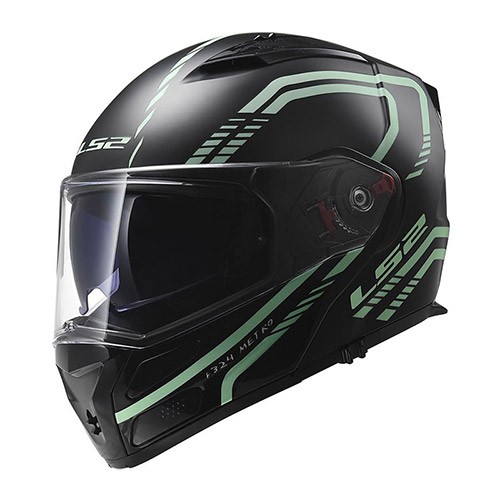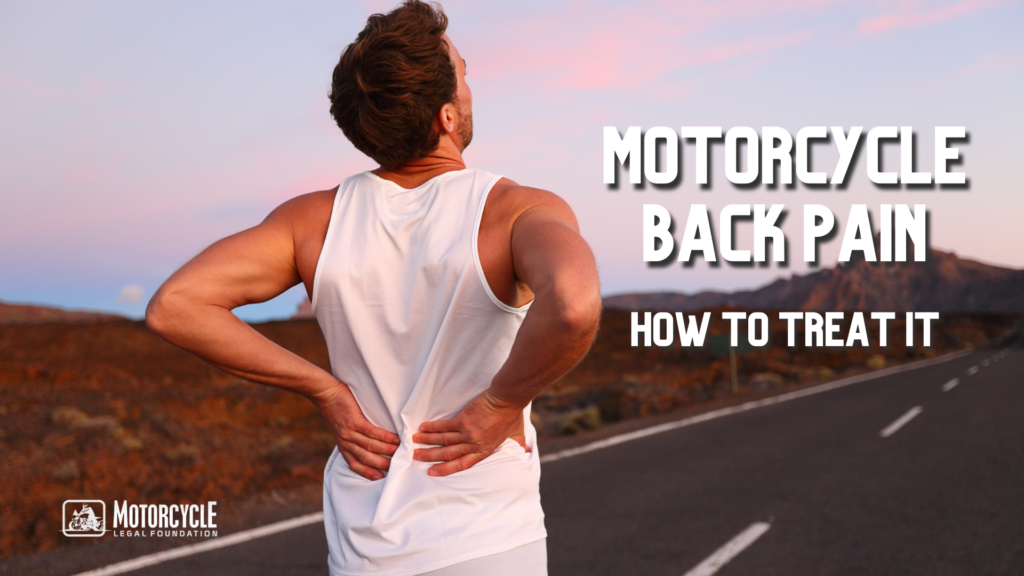If you don’t have back pain, then consider yourself extremely lucky. Government estimates predict that 80% of the population will experience back pain at some point in their lives. The pain can be anything from a dull ache that is constantly with you to a sharp, knife-like pain that makes you wince with every movement.
Back pain is one of the most common medical problems. It is responsible for millions of people being disabled and unable to work or enjoy life without pain and limitation of movement. The Social Security Administration Listing of Impairments, which contains medical conditions that qualify for disability benefits, includes several impairments related to the back and spine that warrant disability determination.
If you ride a motorcycle, there is a good chance that you suffer from pain in your back, neck and shoulder areas. You may even have thought about giving up riding in the hope that the pain and discomfort will go away, but there may be ways for you to continue riding while addressing the cause of the pain and doing something about it.
In order to help you to deal with back pain due to motorcycle riding, we’ll explore what it is about motorcycle riding that may cause back pain and look at some of the ways to treat it. We’ll share with you a few tips to prevent motorcycle back pain from occurring to keep you riding pain-free for as long as possible.
What are the Causes of Back Pain After Riding a Motorcycle?
A number of different medical conditions may cause back pain, including a muscle strain from lifting a heavy object, a ruptured disk, or arthritis. Back pain after riding a motorcycle or during a ride may be the result of several factors having to do with the type of motorcycle and the way that you ride.
Posture
The position of your body depends upon the type and size of motorcycle that you ride and the position of the controls. Sport bikes generally require a forward-leaning posture with your head and neck extended forward. Arms, particularly the forearms, are parallel to the ground. The riding position stresses the neck and lower back as well as the wrists and arms, which must support the weight of a rider’s body.
Cruisers place a rider’s torso and head in a more upright seating position with the feet slightly forward of the knees. Riders of cruisers equipped with forward-positioned footpegs may use them on longer rides to position their feet even more forward than a normal riding position, which may cause a backward tilt to the torso and spine.
Arm and hand position depend on the type of handlebars and position of the controls. Some bikes may force a rider to adopt a wide or high arm extension and hand position, which may affect the positioning of the person’s torso and back.
Length of ride
Who you are and what you ride will determine how long is too long when riding. Some people, particularly those on touring motorcycles equipped with comfortable seats and ergonomically positioned controls to minimize stress on the body, can ride for hours without it producing pain and discomfort.
You have to be the judge of when to take a break, stretch and walk around a bit to give your body a chance to recover. Keep in mind that road conditions also play a factor in how you feel. If you are tense while riding, it affects your body and can cause pain in the arms, neck, shoulders and back.
Choosing the wrong motorcycle
If you are prone to back pain, the best type of motorcycle for you may be a standard, which is designed and equipped for touring and dual sports. The riding position places your body in an upright position with your hands above your feet. Shoulders and elbows are in a neutral position without being extended outward or forward. The overall result is less pressure on the shoulders and back.
Cruisers come next for anyone looking for a motorcycle that goes easy on the back. The riding position is similar to a standard motorcycle, but the slightly forward position of your feet while riding reduces the support provided by positioning the feet directly below the torso as you’ll find with a touring or standard bike.
Sports bikes generally cause the most stress to a rider’s body. The forward-leaning position of the rider with head and neck extended puts stress on the shoulders, neck and back.
Failing to correctly adjust the motorcycle
Too many riders new to motorcycles buy a motorcycle and start riding without realizing that you can make adjustments to fit it to your body. One of the first things you should consider is replacing the seat. Stock seats lack support, so upgrading to one that provides better support will also affect your body position when riding.
Adjusting the position of foot pegs can provide support for your legs. If your feet are positioned forward of your legs, it takes away support and forces the leg muscles to work harder. It can also put more pressure on your back.
If you have neck and back pain while riding, take a look at your handlebars. Positioning the handlebars too high or too low increases stress on the neck and back particularly on those long-distance rides.
How To Prevent Back Pain Due To Motorcycle Riding
Preventing back pain caused by riding a motorcycle requires some planning and thought on your part. Here are a few simple tips that can prevent back pain from ruining your ride:
- Be mindful of your posture: Instead of getting on your motorcycle and riding off, take a moment before starting the ride and periodically during it to evaluate and adjust your posture. Make certain that your back is flat with minimal engagement of your core. Relax the neck and shoulders and align them to avoid over extension. Recheck your posture at regular intervals and make whatever adjustments are required to maintain good posture that puts less strain on the neck and back.
- Stop and stretch: Start the ride by stretching before getting on the motorcycle and make it a point to stop at regular intervals to stretch. Keep it simple and focus on the neck, shoulders and back. While you’re at it, take a walk just to stretch the muscles in your legs.
- Relax while enjoying the ride: Traffic conditions, weather or other factors may cause tension, which in turn causes fatigue and muscle soreness particularly in the shoulders, neck and bak. If you are not having fun, it may be time to take a break, get off the bike, walk around, and stretch.
- If you begin to feel yourself becoming tense during the ride, try to relax to relieve the tension. Tension may be a sign that it’s time to stop, take a break, stretch and rest for a while before getting back on the road.
- Try a back brace: There are a number of different types of back braces on the market. If you believe you need some type of gear to support and stabilize your lower back to help you maintain the proper riding posture, consider using a back brace.
If you feel sore and stretching does not seem to help, it may be time for a break. Pushing your body to its limits just to maintain a predetermined schedule is not the way to enjoy riding a motorcycle. Give yourself enough time to get to your destination by allowing for periodic breaks along the way.
What is the best motorcycle for lower back pain?
If you are prone to back pain, avoid a sport bike. The body position required to ride a sport bike puts too much stress on your back. When buying a motorcycle, better options for avoiding back pain are the standard and cruiser models. Both of them allow you to position your body in an upright posture that does not overly stress the neck and back with the feet positioned to support your legs.
How To Treat Lower Back Pain Due To Motorcycle Riding
If your back pain started after you had an accident while riding your motorcycle, you need to see a doctor to have the injury evaluated. Injuries that result from a crash may entitle you to recover compensation from the driver responsible for causing it. A personal injury attorney with experience representing people injured in motorcycle accidents should be consulted.
When you have back pain caused only from riding and not from injuries suffered in motorcycle accident, some of the treatment options include:
- Nonprescription medications, such as ibuprofen and naproxen, that relieve pain and reduce inflammation may help relieve the stiffness and discomfort.
- Applying ice to the area where you feel the pain may offer some relief.
- Slow stretching throughout the day may help restore range of motion and ease the discomfort.
- Chiropractic care: If home remedies do not bring relief, schedule an appointment with a chiropractor for an evaluation. The doctor will recommend a treatment plan based on the results of an examination.
Do not let back pain due to motorcycle riding prevent you from the pleasures you experience when riding. Instead, explore treatment options either on your own or with the assistance of a chiropractor or physician.
Conclusion
The pain and discomfort need not stop you from getting out on the road and riding a motorcycle. There are treatment options available for the back ache and discomfort from poor posture or a motorcycle that does not fit you properly, but you need to be proactive to eliminate the causes.
If your back pain is caused by injuries suffered in a motorcycle crash, you need legal representation to enforce your right to compensation. A consultation with a motorcycle accident attorney should be at the top of your list of things to do after a crash.

